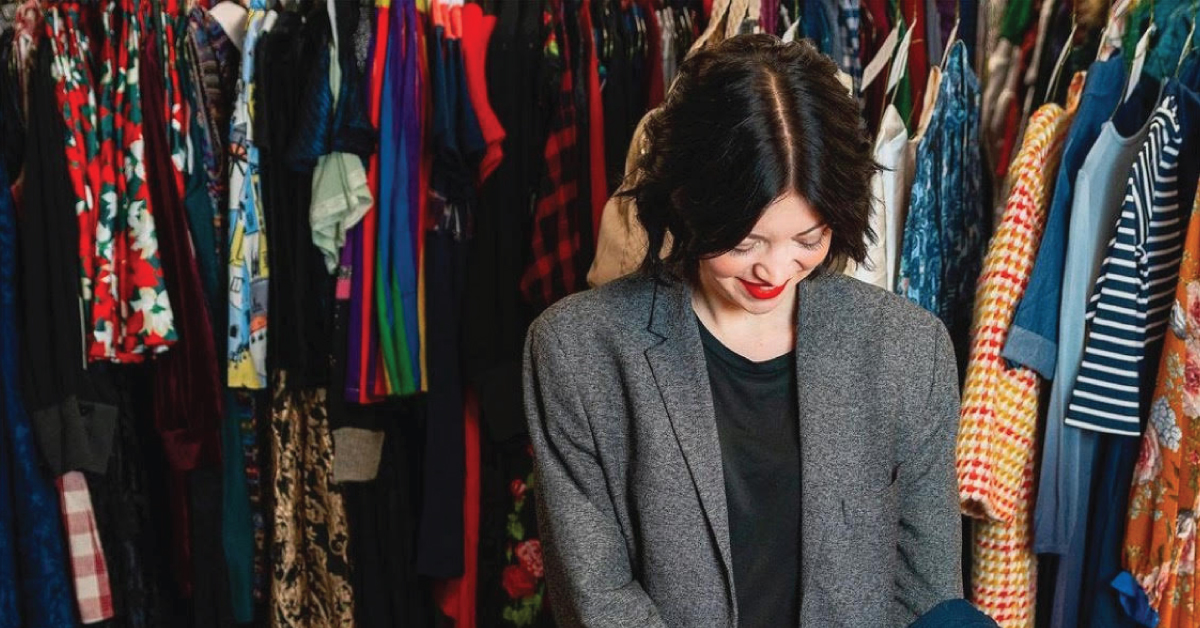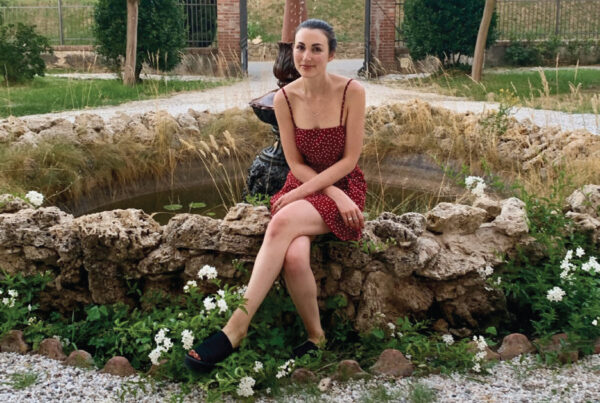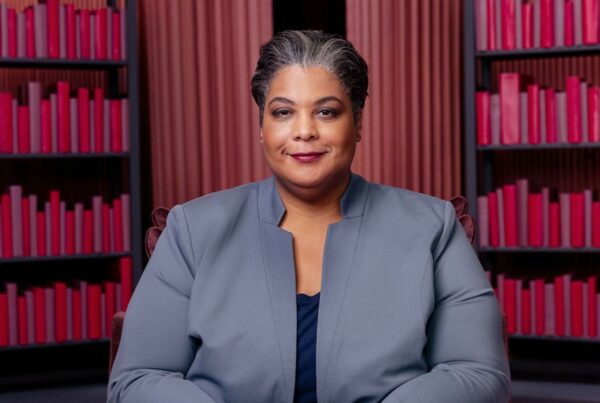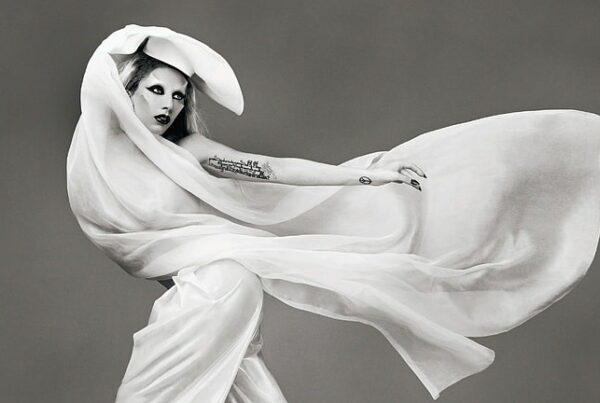How The Garment Project Uses Fashion to Empower Eating Disorder Recovery
When Erin Tomb launched The Garment Project in 2017, she filled a vital need in eating disorder recovery that no one else had. The Garment Project is a non-profit that provides brand new, sizeless clothing to those in eating disorder recovery — free of charge. How does it work? Erin curates personalized clothing boxes for clients who then try on the new clothes with their treatment team to ensure a therapeutic fitting room experience. Erin knows firsthand how hard it is to deal with a changing body and ill-fitting clothes during eating disorder recovery, so she created a solution. You can read our conversation below:
Tell me about The Garment Project process.
ET: The treatment professionals nominate the client through our website. Candidates can be nominated more than once. We are limited with resources and time, so if we’re not able to choose every candidate that month, they can be renominated. When we go through nominations, there’s a rubric we use. We want to make sure that it’s essentially a fitting room experience but in a very safe and trusted environment.
The next step is an anonymous style questionnaire for the candidate. We tend to focus on how the clothing makes them feel, and we don’t ask any fit questions except how they prefer their clothes to fit. We want to make sure we are only giving them things they can actually wear.
Then we do a pre-phone call with the therapist to narrow down the fit. It’s a very technical conversation with zero judgment. We’re able to narrow it down to an approximate t-shirt size and we don’t require any other numbers than that.
We’ve had a lot of success to the point where most candidates only have two to three items left over. We’re able to blindly size, which I think is something that sets us apart. It’s pretty tough to do, especially when we’re dealing with someone who might be uncomfortable with the body they are in.
I imagine that’s difficult, especially when you’re dealing with clients who could be very triggered when something doesn’t fit.
ET: Exactly. But the pieces that don’t work are almost more important than the pieces that do work. Because what happens in that moment when something doesn’t fit? How can your therapist help you process those emotions for when it inevitably happens in the future? My favorite bit of feedback — a therapist let us know she found it really helpful to talk about body image in a very specific way.
I think this is one of the most important parts of The Garment Project. It’s an extension of their treatment plan, and it gives them an opportunity to talk about things that most people don’t get to talk about for weeks or months after they graduate from a program. You cannot hide when you’re exposed like that, and I feel like that’s when the real work can happen.
When did you decide to create The Garment Project and what were the challenges?
ET: It’s funny, I had one of my old co-workers send me a text the other day that said, “I remember when you walked in one day with a non-profit for dummies book and look at where you are now!” So that’s how I started! I was on our Facebook page the other day and I saw we actually created the page in 2012. I had come up with the idea for this sitting in a treatment group talking about how unfair it was that we had done all of this work to accept our bodies, yet I don’t feel good whenever I walk out because this shirt is pulling here. My therapist was like, “Well then do something about it!”
When I was solid into my recovery and was able to realize the impact that it had on me, that’s when Jordan (co-founder and husband) and I had a conversation that this is something we could see ourselves doing, that we think we could be good at, and that would just make us really happy. So we honestly just started googling to see if there was anybody else out there doing this. I also knew from my experiences in treatment that there didn’t seem to be this option. Most of our research was put into how to create a non-profit, a 501c3. The hard part was the by-laws and making sure we were completely legitimate.
How did you choose and get retailers to donate clothing?
ET: We were able to work right off the bat with Aerie and American Eagle, who have very body-positive branding, and even companies like ModCloth.
We haven’t had to fight for our case. We work with most retailers who we feel would get it and have gotten it. We are very purposeful about who we are trying to get just because we can trust their sizing, their messaging. If one of our candidates really liked this particular brand, we can trust that they can go to their website and won’t be exposed to something that will make them uncomfortable.
When I’m able to share a little bit about how this has affected me in my recovery, people do tend to jump on board because I am giving them a personal connection to it. I think that I’m able to approach retailers in a different way because I have 15 years of retail experience, so I’m able to speak that language a bit.
What are your goals for the future?
ET: I am really excited for some of the things we’re hoping to do in 2021 to make the Garment service more accessible to more people. Where we are right now, we’re not able to get the amount of clothing out there that needs to be out there. We’ve also known that there is a need for clothing in recovery, not just at a specific point in someone’s treatment plan. The Garment service exists for candidates that are at a certain point of their recovery where they are able to make the most of it and are open to having those scary experiences when it comes to clothing. Some people might not feel ready for it yet. So being able to help those candidates who are still needing clothing but aren’t there yet is what we’re working hard on for next year.
We are also honestly just looking to be a bigger part of the eating disorder community. My personal goals are to create more of a community of individuals that we can link up with Garment to talk about a different aspect of an eating disorder or still tie in the clothing and fashion aspect of it. I think there are so many options, like virtual town halls and webinars for people, so not only being able to participate in a lot of those, but to provide education for our community.
Has it been healing or scary putting your own recovery experience out there?
ET: A little bit of both, definitely. I think everyone’s recovery looks so different. For me, I used to think recovery was living every day to the fullest, climbing mountains and doing anything big. I think realizing that a recovered life was coming home at the end of a hard day and watching Netflix, and having dinner with my husband, and not thinking about food or my body, that’s what recovery really means. I feel like when I’m able to share those small moments very authentically, I feel very good. It’s reassuring that it seems like people need to hear that message.
I think that I do feel very strong in my recovery. I’ll be honest — I really don’t think about it anymore. I don’t wake up and think about the clothing sizes. I don’t wake up and think about food. So it’s interesting to have this part of me that’s my past but still tied so much into what I’m doing right now. The most exciting part for me with Garment is the clothing and the style and I love making someone feel good in what they’re wearing. I want to be a good role model for people. But I do think I am able to separate my eating disorder from this because I had such an empowering experience when I was in my recovery. I feel like I almost got this enjoyment out of being able to kick my eating disorder’s ass. Being able to instill that in other people, in any type of way, feels very cool.
Call To Action

–Alicia Briggs, Content Creator






